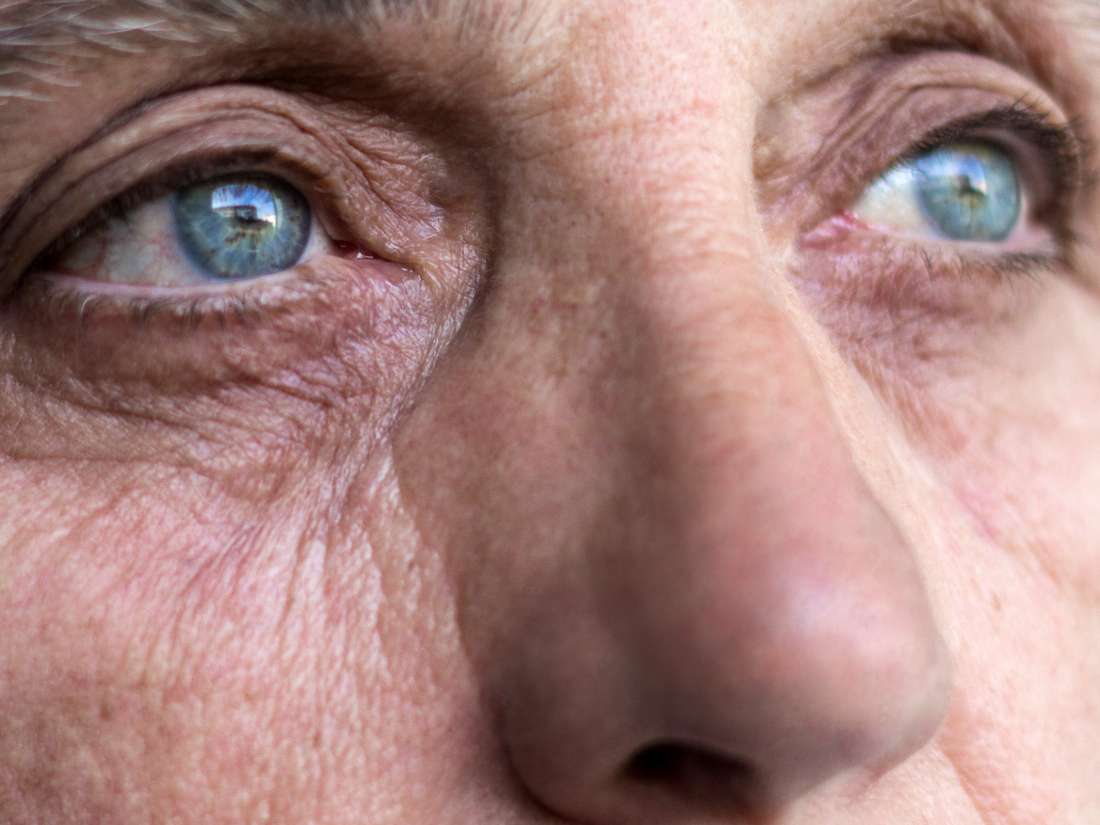
Asymmetrical eyes — or eyes that are not the same size, shape, or level as each other — are very common.
In rare cases, having asymmetrical eyes may indicate an underlying medical condition. Most of the time, however, this is not a cause for concern.
Although a person may be aware of their own facial asymmetry, it is unlikely that others will notice.
In fact, most people have asymmetrical features, with research indicating that some degree of facial asymmetry is both normal and desirable.
Read on to learn more about asymmetrical eyes, including some potential causes and home remedies.
Potential causes of asymmetrical eyes include:
Genetics
Genetics can account for uneven eyes and other types of facial asymmetry.
People with asymmetrical eyes may notice that other members of their family have similar features.
Having asymmetrical eyes as a result of genetics is not a cause for concern.
Aging
Imaging studies show a significant link between increasing age and facial asymmetry.
As people age, the soft tissues in the face relax. Cartilage, such as that in the nose, continues to grow while the bones do not. These changes can cause asymmetry.
Lifestyle factors
Some lifestyle factors can contribute to uneven eyes. For example, research on sets of twins has linked smoking with upper eyelid ptosis, also known as droopy eyelids.
Also, excessive sun exposure can change the skin around the eyes. Sun damage may affect one side of the face more than the other, leading to asymmetry.
Bell's palsy
Bell's palsy is a type of sudden, temporary facial paralysis. It causes one side of the face to droop, affecting the smile and one eye.
Its cause is currently unknown, though it may be due to trauma, nerve damage, or a complication of a viral infection.
Other signs and symptoms of Bell's palsy include:
- changes in tear or saliva production
- difficulty making facial expressions
- drooling
- headaches
- jaw or ear pain
Trauma
Sustaining a blow to the face or being involved in a vehicle collision can cause damage to the eye area, leading to asymmetry.
Facial trauma may cause enophthalmos, or displacement of the eye. This causes people to appear as if they have a sunken eye.
Sinus conditions
Some sinus conditions can also lead to enophthalmos. These include:
- chronic maxillary sinusitis
- maxillary sinus tumors
- silent sinus syndrome
With these conditions, changes to the eye can happen suddenly or gradually. They may also cause other symptoms, including:
Graves' disease
Graves' disease is an autoimmune condition that causes an overactive thyroid (hyperthyroidism).
People with Graves' disease can develop proptosis, or bulging eyes. When this affects one eye more than the other, it can lead to asymmetry.
Some other signs and symptoms of Graves' disease include:
- anxiety
- changes in sexual desire or function
- enlargement of the thyroid gland (goiter)
- fatigue
- heart palpitations
- menstrual changes
- sensitivity to heat
- sweating
- unintended weight loss
Stroke
Stroke is a medical emergency. It can occur when there is reduced blood flow to the brain.
People can develop sudden facial asymmetry due to stroke. If the drooping is extreme, it may affect a person's vision.
Other symptoms of stroke include:
- difficulty speaking and understanding
- a sudden, severe headache
- loss of balance or coordination
- numbness or weakness of the face, one arm, and one leg
- sudden onset of blurred or double vision
In most cases, uneven eyes do not require treatment. This is especially true if the asymmetry is the result of genetics or aging.
However, if an underlying medical condition is contributing to facial asymmetry, people may require treatment for the condition. Treatment may also be necessary if asymmetrical eyes are causing vision problems.
Some people may wish to treat uneven eyes for cosmetic reasons.
Possible treatments include:
Addressing underlying medical conditions
In some cases, treating the underlying medical condition responsible can make asymmetrical eyes seem less noticeable.
For example, treating Graves' disease with radioactive iodine or thyroid medications may stop the eyes protruding.
Those who have a medical condition that is contributing to their eye asymmetry should speak to their doctor about managing their symptoms.
Botox
Botox is a nonsurgical option for facial asymmetry. It involves injecting Botox, which is a muscle relaxer that comes from the bacterium Clostridium botulinum, into the area around the eyebrows.
Botox treatment lifts the brows, reducing the appearance of uneven eyes. The effects of Botox will typically last for around 3–6 months.
Brow lift
A brow lift is a cosmetic procedure that elevates the eyebrows. The aim is to give the face a more youthful appearance and provide greater facial symmetry.
There are different types of techniques a surgeon might use to lift the brow, but they will usually perform the procedure while a person is under general anesthesia.
Some potential risks of a brow lift include:
- bleeding
- further asymmetry (though additional surgery can correct this)
- hair loss or changes to the hairline
- infections
- an allergic reaction to the anesthetic
- scarring
- temporary or permanent skin numbness
The results of a brow lift are not permanent. Aging and sun damage can cause the skin to droop again.
Blepharoplasty
Blepharoplasty is a type of cosmetic surgery that corrects uneven eyelids. It is a frequently performed aesthetic procedure.
During the procedure, a surgeon will remove excess fat, muscle, or skin from around the eye area to make the eyes appear more symmetrical.
After this surgery, a person may experience temporary bruising and swelling.
Some other risks include:
- bleeding
- infections
- an allergic reaction to the anesthetic
- scarring
Less commonly, the procedure may cause chronic conjunctivitis (inflammation of a part of the eye) or swelling that lasts for more than 3 months.
In rare cases, blindness can occur.
Orbital surgery
Orbital surgery is surgery on the eye socket (orbit). There are a few different types of orbital surgery, depending on the problem and the area of the eye socket that it affects.
A surgeon may carry out procedures to:
- repair fractures
- remove tumors
- remove bones or fat to treat the effects of Graves' disease
- reconstruct the anatomy of the socket
Like all surgeries, these procedures carry risks.
If they wish to, people with minor facial asymmetry may be able to use home remedies to make their eyes appear more symmetrical.
Some options include:
Makeup techniques
Various contouring and highlighting techniques can reduce uneven eyes and eyebrows. Makeup artists and online tutorials can provide guidance on this.
Some people even use hairstyling techniques to draw attention away from their eyes.
Eyelid tape
Putting eyelid tape on a sagging eyelid can lift the skin, hiding the sagging and asymmetry.
These thin, transparent strips are available to buy in beauty stores. They are also available online.
Asymmetrical facial features are normal and common. They are often the result of genetics, aging, or lifestyle factors.
Most people do not notice facial asymmetry in others, and research shows that it may even be a desirable feature.
However, for those who wish to address uneven eyes, several cosmetic procedures and home remedies are available.
In some cases, a medical condition may be causing facial asymmetry. In these cases, treating the underlying condition may help reduce the appearance of uneven eyes.
Anyone concerned about their facial asymmetry can speak to their doctor. It is also a good idea to seek medical attention if the asymmetry came on suddenly or if it is causing vision problems or other symptoms.
We picked linked items based on the quality of products, and list the pros and cons of each to help you determine which will work best for you. We partner with some of the companies that sell these products, which means Healthline UK and our partners may receive a portion of revenues if you make a purchase using a link(s) above.
Read More




